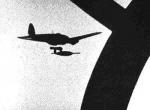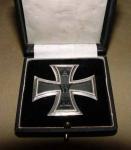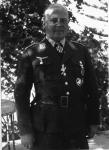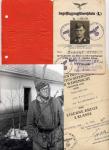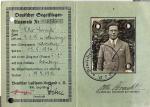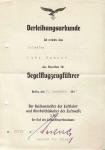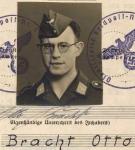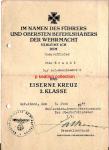-
Posts
2,284 -
Joined
-
Last visited
-
Days Won
6
Content Type
Profiles
Forums
Blogs
Gallery
Events
Store
Everything posted by PKeating
-

Luftwaffe Fallschirmj?ger and Wehrmacht in SA Uniforms
PKeating replied to Naxos's topic in Wehrmacht Medals, Decorations & Awards
What a wild image! Crikey! Time to delve into the files to come up with an answer for this one. PK -

Heer SS WEARING PARA BADGE
PKeating replied to mmiller's topic in Wehrmacht Medals, Decorations & Awards
I know the photo. I have an old print of it somewhere in my files. One of the paras is carrying his M38 in his hand and an MG42 slung over his shoulder. The other has his helmet pushed back on his head. They both look exhausted and very hot and bothered. I don't know if the caption in the Munoz book is reliable. The Munoz book is certainly an indispensable addition to any serious library but where the SS-FJ are concerned, I remember some of the former officers and NCOs having a rather negative view of some of it. That said, there will always be veterans who dislike a book or a movie about a unit in which they served or a battle in which they fought. I think Siegfried Milius considered Munoz to have been very impertinent in writing about Herr Milius' emotions etcetera... PK -

EK 1914 Rim jobs....
PKeating replied to Chris Boonzaier's topic in Germany: All Eras: The Iron Cross
Depends perhaps upon how numismatically-minded you are. Numismatists - coin collectors- consider patina an integral aspect of the coins they collect and will regard a polished coin as worthless unless it happens to be of the rarity of, say, a British 1933 penny or Edward VIII sixpenny piece. I tend to view core condition as the main focal point when it comes to Imperial Iron Crosses. I also happen to find deep patina or "toning" on the silver very attractive but this is a personal viewpoint. I have a cased EK1 by KO which is in truly mint condition or the closest I have ever seen to true mint in a 1914-issue EK. The silver remains as bright as it was when new, as does the finish on the core. I love the piece but I cannot see myself polishing a richly toned cross to achieve an approximation to the mint appearance. You see, even though the KO is mint, with bright silver, the silver surface of a recently polished cross would never, in my opinion, be quite like the untouched surface of the mint piece. This is why coin collectors have such a zero tolerance attitude to the question of polishing or even aggressively cleaning coins. Once you examine the piece through a loup, you can see the gouges and ridges imparted by whatever polish you used. True, soldiers and veterans would not have paraded with black-rimmed Iron Crosses but we are not the soldiers and veterans in question. We are custodians of history and its artefacts and our job is to arrest deterioration as much as possible without trying to turn the clock back by assaulting the items in our care with Silvo and Brasso. Edited to add a couple of snaps of the KO EK1 in question, taken about five years ago. She's still in the same pristine state. PK -

Luftwaffe Juncker Glider Badge
PKeating replied to Stan's topic in Wehrmacht Medals, Decorations & Awards
-

Heer Army Para by Juncker
PKeating replied to Stan's topic in Wehrmacht Medals, Decorations & Awards
110% original 1943/44 badge in feinzink by C E Juncker, Dave. Regarding the hook on Andy's badge, it must a trick of the light when one looks at the obverse of the wreath. I tend to presume that these badges are repaired! There are some nice badges appearing here. PK -

Heer Army Para by Juncker
PKeating replied to Stan's topic in Wehrmacht Medals, Decorations & Awards
-

Heer Army Para by Juncker
PKeating replied to Stan's topic in Wehrmacht Medals, Decorations & Awards
-

Heer Army Para by Juncker
PKeating replied to Stan's topic in Wehrmacht Medals, Decorations & Awards
Very nice, worn example with what seems to be the typical kind of period repair to the hook. The majority of aluminium badges have one of more repairs as their recipients continued wearing them as a mark of pride in their former membership of the Fallschirm-Infanterie-Kompanie/Bataillon and replacements were hard to come by. It is relatively rare to find these badges with their fragile aluminium hooks intact. PK -

Luftwaffe Juncker Glider Badge
PKeating replied to Stan's topic in Wehrmacht Medals, Decorations & Awards
Lovely badge, Stan! Maybe they felt that the blanks were cast and then die-struck for detail. The wreath of every original Glider Pilot Badge I'd had was clearly struck on a set of dies. PK -
3./LLG2 was formed in August 1942 as part of I./LLG2. From April to September 1943, I Gruppe was in southern France, based consecutively at Orange, Nancy and Istres. I Gruppe flew Heinkel He111 and Go242s. 3./LLG2 took eight Go242s to Naples on 11.9.1943 and from there to Catania on 13.7.1943. The rest of the Gruppe followed them on 14.7.1943 and airlifted 1. Fallschirmj?ger-Division?s heavy equipment to Sicily on 20.7.1943. However, 3./LLG2?s crews had returned to Istres on 19.7.1943. After airlifting elements of 2. Fallschirmj?ger-Division to Rome to disarm Italian forces early in August 1943, I./LLG2 returned to France and thence to Hagenau, in Germany, in September 1943, remaining there until June 1944, when they flew back to Istres. I./LLG2 left France in September 1944. The photograph I found in the French ECPA-D archives at Fort d?Ivry of Otto Bracht in combat kit was from a roll of film shot by a Luftwaffe photo-reporter of the Fallschirm-Propaganda-Kompanie in the Ukraine sometime during the winter of 1943/44. 2. FJD had been transferred from Italy to the southern sector of the Eastern Front in November 1943. Or, rather, the rump of 2. FJD had been transferred to Shitomir (which sort of rhymes with Tito), the rest being taken as cadre for the newly-forming 4. FJD. The heavily understrength division, comprising I./FJR2, III./FJR2, IV./FJR2, II./FJR5 and some supporting arms, fought at Shitomir and then at Kirovograd in January 1944. Retreating through Krioj Rog, Uman, Novgorodka and Kiev, April 1944 found the remnants of 2. FJD in the Kishinev zone, from where they were moved back to Germany for R&R and thence to Western France. So, there are two possibilities: Bracht?s EK2 could have been for something he did when on the ground with 2. FJD in the southern USSR after airlanding reinforcements or supplies, perhaps during the Battle of Kirovograd, or it could have been for the Battle of Drvar on 25/26.5.1944. The OKW issued their Drvar communiqu? on 6.6.1944 and awards were made for Drvar on and around that date. If seconded to pilot a DFS 230 into Drvar, Bracht would have come from Hagenau and would have been back there by the evening of 26.5.1944 or the following day and from there to Istres when news of the Allied landings broke. Otto Bracht could have been seconded for the Drvar operation on 25.5.1944. Although LLG2 was primarily equipped with the huge Gotha 242 gliders, they also flew DFS 230s and Bracht would have been DFS 230-qualified. As far as I know, glider pilots and other attached personnel were evacuated from Drvar shortly after the end of the battle on the morning of 26.5.1944. So his EK2 could easily have been for Drvar but issued by the FS-AOK in France, whose HQ was in Nancy, on 6.6.1944 along with other awards. The Luftwaffe awardee lists would have been telegrammed or telexed to local Luftwaffe headquarters so it would make sense. The document is handsigned by General Walter Lackner in the absence of Generaloberst Student. I haven?t researched airlandings in the Ukraine during the fighting withdrawal in the winter of 1943/44 but if anyone has any information to share, I would be grateful to see it. I would also be interested in readers? opinions. It?s a bit of a trick quiz or ?non-quiz? but what do you think? I would love it to be a Drvar award but it could be for southern Russia. PK
-

Korinth EK2 photo caption
PKeating replied to PKeating's topic in Germany: Third Reich: Research, Documentation & Photographs
I see! Thank you very much, Rick. I'm trying to 'rebuild' his family with the photos. So this fellow could have been a relative of the man who had this amongst his personal wartime photos. Or maybe just a friend. I posted some of the group here earlier for anyone who likes FJ stuff. Regards, PK -

Heer Army Para by Juncker
PKeating replied to Stan's topic in Wehrmacht Medals, Decorations & Awards
That 43/44 badge is in nice condition, which attests to the quality of C E Juncker badges in general. Even though the finish is duller than that of the aluminium badges, although the eagles appear to have been frosted, the crispness of the strikings is evident. PK -
That's what I thought. And it's possible. But he would have to have been seconded to another transport squadron for R?sselsprung. Which is entirely possible given the need for glider pilots for the Tito operation. However, I am not sure that the EK2 document would have come from the Fallschirm-Armee Oberkommando in that case. Otto Bracht flew gliders for sport before and after WW2: http://lsg-lippe.de/htm/ve_gesch.htm PK



